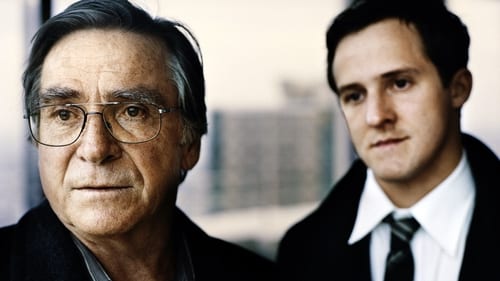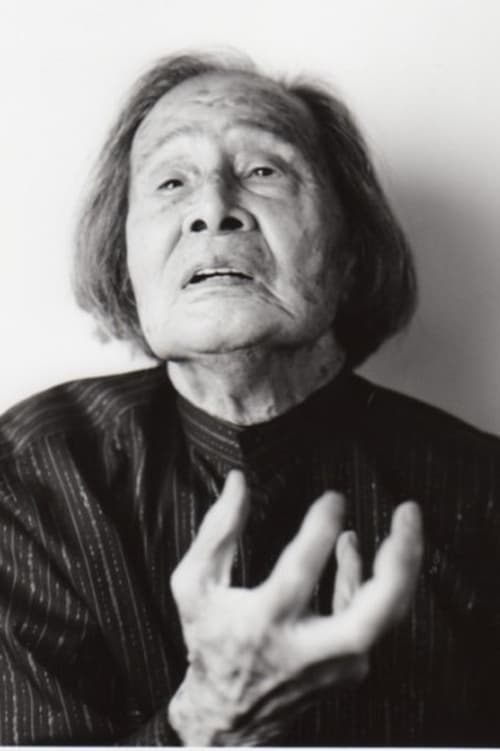Mr O's Book of the Dead (1973)
Gênero :
Runtime : 1H 30M
Director : Nagano Chiaki
Sinopse
Mr O’s Book of the Dead is the last of a trilogy of experimental films about Kazuo Ohno, co-founder of the contemporary Japanese style of dance known as butoh, made with director Chiaki Nagano during a period in which he had retired from public performance, and just before he began touring the world as a solo dancer with his celebrated work Admiring La Argentina. In the film, Ohno leads a troupe of strangely dressed, made-up and gesticulating dancers through a succession of landscapes alternately lush, desolate and surreal.

Trudi é informada que seu marido Rudi tem uma doença terminal, e sugere que visitem seus filhos em Berlim - mas sem contar a verdade sobre seu estado de saúde a ninguém. Ao chegar, seus filhos, em meio aos afazeres, os tratam com indiferença. Quando seguem sua viagem, o inesperado acontece e Trudi morre. Rudi só então descobre que o grande sonho de Trudi sempre foi ir ao Japão, e decide então fazer a viagem em homenagem à esposa. O filme, além de tudo, é uma homenagem ao grande diretor japonês Yazujiro Ozu, tendo sido baseado em algumas de suas obras (Filho Único, Pai e Filha, e outros). Um olhar poético sobre o Japão, o Kabuki e o Hanami é o formador da atmosfera deste filme.

Hirosuke (Teruo Yoshida), um estudante de medicina com quase nenhuma lembrança do seu passado, está preso num asilo, apesar de ser perfeitamente são. Depois de escapar do hospício, e sendo enquadrado pelo assassinato de uma menina de circo, ele vê a foto de um homem recentemente falecido, Genzaburo Komoda, a quem ele tem uma estranha semelhança. Ao fingir ter sido ressuscitado, Hirosuke assume a identidade do homem morto, enganando todos, incluindo a viúva e amante de Komoda. Enquanto na casa de Komoda, Hirosuke recorda memórias que o convencem a viajar para uma ilha próxima, a casa de Jogoro, o pai de Genzaburo. Enquanto na ilha, Hirosuke não só descobre os planos de Jogoro para construir sua "comunidade ideal" (transformando seres humanos perfeitamente normais em aberrações hediondas), mas também a terrível verdade por trás da sua própria identidade.

A selection of seemingly unconnected scenes featuring Nick Cave, Blixa Bargeld, Nina Hagen and Lene Lovich. Losely based on Voltaire's satire "Candide".

The dark sensibilities and cultural resonances of Butoh, the radical Japanese dance movement, are explored in this multilayered work. Profoundly rooted in both traditional and contemporary Japanese culture, Butoh arose in a spirit of revolt in the early 1960s. Characterized by frank sexuality and bodily distortions, Butoh transforms traditional dance movements into new forms, stripping away the taboos of contemporary Japanese culture to reveal a secret world of darkness and irrationality.

A document of Tatsumi Hijikata's Butoh dance with Kazuo Ohno as the guest dancer shot in Hijikata's early period when he was emerging as the originator of Butoh. All of the male dancers are dressed up with evening suits and move gracefully, yet an intruder breaks up the whole scene abruptly. The film is worth seeing, even if just to see a memorable gay duet of Hijikata and Ohno. Overexposed, washed out images are sandwiched among normal ones.

A documentary about legendary butoh dancer Kazuo Ohno.

Ankoku Butoh is a style of avant-garde dance that established itself in the counter culture experimental arts scene of post WWII Japan. The dance form is thought to have been founded by Tatsumi Hijikata, who both created and performed in butoh pieces from the late 1950’s - through the early 1970’s. In butoh, the style of movement is extremely stylized and deliberate, vacillating between slow and sharp, expressing feelings of dread, sexualization, violence, calmness, birth and “creatureness” among other things. This 1973 performance of Summer Storm at Kyoto University was Hijikata’s last public performance before his death in 1986.

Peter Sempel's masterful poetic film tribute to butoh performer Kazuo Ohno.

Short film in which butoh dancing is used to reflect on the nuclear bombings of Hiroshima and Nagasaki.

Mr O’s Book of the Dead is the last of a trilogy of experimental films about Kazuo Ohno, co-founder of the contemporary Japanese style of dance known as butoh, made with director Chiaki Nagano during a period in which he had retired from public performance, and just before he began touring the world as a solo dancer with his celebrated work Admiring La Argentina. In the film, Ohno leads a troupe of strangely dressed, made-up and gesticulating dancers through a succession of landscapes alternately lush, desolate and surreal.

Anma (The Masseurs) is a representative and historical work by the creator of Butoh dance, Tatsumi Hijikata in his early period in the 1960s. The film is realized not only as a dance document but also as a Cine-Dance, a term made by Iimura, that is meant to be a choreography of film. The filmmaker "performed" with a camera on the stage in front of the audience. With the main performers: Tatsumi Hijikata and Kazuo Ohno, the film has the highlights such as Butohs of a soldier by Hijikata & a mad woman by Ohno. There is a story of the mad woman, first outcast and ignored, at the end joins to the community through her dance. Inserted descriptions of Anma (The Masseurs) are made for the film by the filmmaker, but were not in the original Butoh. The film, the only document taken of the performance, must be seen for the understanding of Hijikata Butoh and the foundation of Butoh.

A man details his crimes and pleasures within an armchair to an adulterer who sees the people in his life as nothing more than objects.

Jet black, an accumulation of layer after layer of darkness Attracting the light, a fragrant color Something appearing from the interior depths

"Butoh: Body on the Edge of Crisis" is a visually striking film portrait shot on location in Japan with the participation of the major Butoh choreographers and their companies. Although Butoh is often viewed as Japan's equivalent of modern dance, in actuality it has little to do with the rational principles of modernism. Butoh is a theater of improvisation which places the personal experiences of the dancer on center-stage. By reestablishing the ancient Japanese connection of dance, music, and masks, and by recalling the Buddhist death dances of rural Japan, Butoh incorporates much traditional theater. At the same time, it is a movement of resistance against the abandonment of traditional culture to a highly organized consumer-oriented society.







